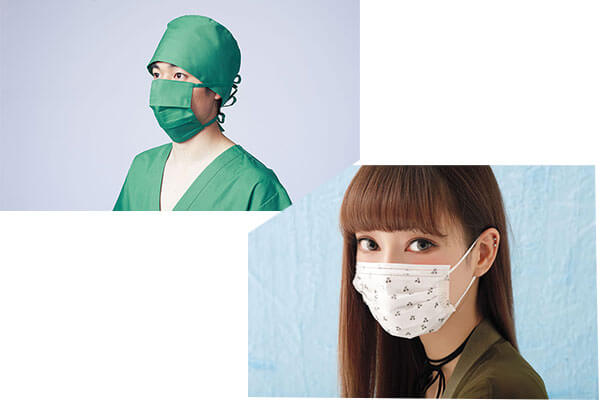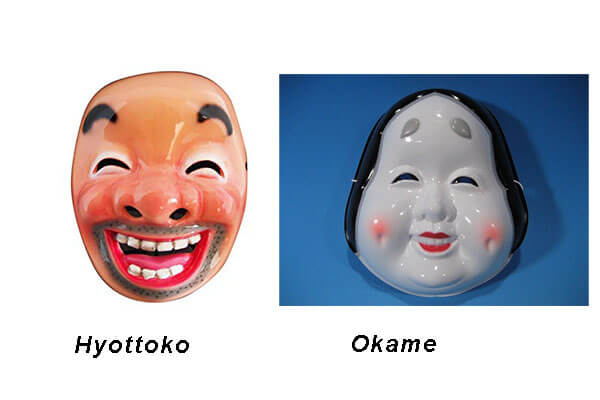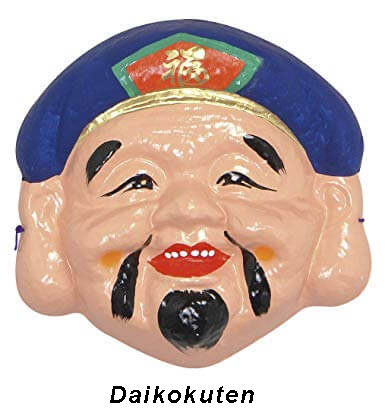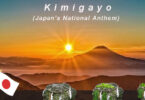Hi everyone how are you doing? Today’s subject is “Men/Omen (Masks)“ which is one of “Cool Japan”, but there are a little different in nuance of meaning as Japanese masks are very diverse.
We Japanese use Men or Omen as Masks
No.1 when we have festivals、during which masked man pretends god or deity and also to amuse like Holloween,
No.2 Noh play, masks is absolutely necessary,
No.3 masks for referee of baseball, fencing, ice hockey and Kendo etc.
And No.4 Japanese people prefer to wear masks when they have cold in particular, covering made of fibre or gauze and fitting over the nose and mouth to protect against air pollutants, to prevent spreading virus to others when coughing or made of sterile gauze and worn to prevent infection of the wearer or (in surgery) of the patient.
On the otherhand, speaking of “Masks” in English, the meaning of the masks includes a covering for all or part of the face, worn as a disguise or hiding your face like masquerading.
On the point, we have a word of the same meaning of Masks, we say “Fukumen” such as a masked burglar/robber or an unmasked patrol car.
So today I’d like to talk about the former Masks.
What’s “Men/Omen (Masks)”?
Japanese masks are part of a very old and highly sophisticated and stylized theatrical tradition. Although the roots are in prehistoric myths and cults, they have developed into refined art forms.
The oldest masks are the gigaku. The form no longer exists, and was probably a type of dance presentation. The bugaku developed from this – a complex dance-drama that used masks with moveable jaws.
An extensive array of masks, some represnting deities, others animals. Here’s a grinning face. And here’s a scary-looking fox. Japanese masks are very many and various.
Masks play an important role in festivals. Since ancient times, people in Japan have believed in a multitude of different deities. And festivals feature various deities as characters; people act out these roles wearing masks.
These characters delivering delightful dance moves are called Hyottoko and Okame. They are familiar faces at this festival, which has been celebreted since around the 17th century.
Hyottoko is often regarded as a god of fire. His twisted mouth symbolizes him blowing on the fire to make it burn even more.
And this plump female deity is Okame. She is said to be a goddess of the arts who brings good fortune.
Masks become richly experessive the moment people put them on and begin performing. This man is wearing a mask of Daikokuten, a god who brings wealth. With flowing hand and arm movements, the wearere brings the mask to life.
Japan’s many deities have diverse powers. By wearing masks of various gods at festivals, people can assume their roles and dispense their respective blessings.
What about “Noh mask”
Another context in which masks play a major part is Noh theatre. Noh is a perfoming art which uses dance to express the full range of juman emotions. With minimal, high-precision movements, an actor conveys subtle shifts in mental state.
The nō or noh mask evolved from the gigaku and bugaku and are acted entirely by men. The masks are worn throughout very long performances and are consequently very light. The nō mask is the supreme achievement of Japanese mask-making.
Nō masks represent gods, men, women, madmen and devils, and each category has many sub-divisions.
Kyōgen are short farces with their own masks, and accompany the tragic nō plays.
Many female masks are used in Noh. Young women, fearsome crones, pure celestial maidens. There are more than 20 kinds, each made for a specific character type. It’s the Noh mask-makers who endow the masks with amazing expressiveness.
The most difficult part of colouring a mask is harmonizing the light skin tone and the stark black lines of the eyes and hair. To achieve this, Indian ink is mixed with aged soot.
To give a deep, “aged” look to the mask, pigments that have been aged for three or four years are used, and several coats are applied over a period of one week, while using additional materials like soot for shading.
By employing a whole gamut of subtle techniques of this kind, an artisan breathes life into a mask.
From festival masks to those used in performing arts, there are literally so many faces to Japanese masks.
Regarding Kabuki, it is the theatre of modern Japan, rooted in the older forms, but in this form masks are replaced by painted faces.
Finally, after knowing about Japanese Masks, why not participate in the festival wearing your favorite mask?














Leave a Comment